Nokia 700 Review
Nokia 700
Nokia claims it’s the smallest smartphone ever. Is that because there's nothing to the 700?
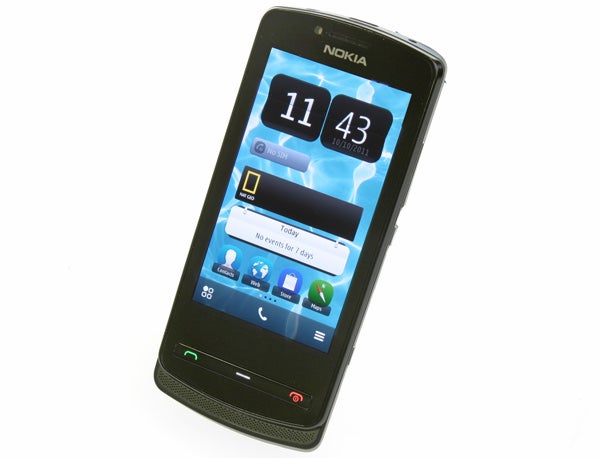
Verdict
Pros
- Excellent screen
- Great build quality
- Comprehensive video support
Cons
- Limited app support
- Ropey camera
- Symbian OS is still limited
Key Specifications
- Review Price: £289.99
- 1GHz processor
- 5-megapixel camera with LED flash
- Symbian Belle OS
- 2GB internal memory
- 3.2in AMOLED screen
The new Nokia 700 claims to be the smallest smartphone ever. In a world where several top phones aren’t much thicker than 8mm, this is a pretty bold claim. Much more important than its size, though, is its price. Available for free on contracts around the £15 mark, it competes with mid-range smartphones, not those that tend to be able to make superlative claims about their specs and abilities. The big question mark is whether its Symbian 3 operating system (OS) is enough to take the fight to the mid-range Androids of this world.
While the Nokia 700’s tagline of being the “smallest smartphone ever” sounds impressive, it’s something that goes against the current trend in smartphones. The “bigger is better” motto has been rejected by Apple’s iPhone 4S, but Android makers like HTC and Samsung have taken it to heart. It’s in the disregarding of this ideal that the Nokia 700 has become so teensy. 
Its 3.2in display will feel like a compromise for some users, but it is what let the 110×50.7×9.7mm body become so compact. It’s a tiny bit thicker than the iPhone 4, but is undeniably slim. Using a Gorilla Glass-fronted touchscreen and metal backplate, it feels similar to the Samsung Wave in-hand. It’s exceptionally well-made, dense and reasonably stylish – much more so than the drab-looking Nokia C7.
Its one bold design move, aside from shaving down those dimensions enough to wave a banner about how small it is, is the step at the bottom of the handset. Looking like part of a slider mechanism, this “chin” is deceptive. It doesn’t move, slide or extend – it’s a speaker output and little else. However, it doesn’t extend the bottom of the phone too far and, finished with metal effect plastic, doesn’t spoil the look. Remove it and you’d have the very archetype of a modern smartphone – shiny, black and anonymous – so perhaps it’s a good thing it’s here to differentiate it from other bigger rivals.
Although the Nokia 700 looks and feels nicer than previous affordable Nokias like the C5 and C6, its maker hasn’t decided to let the look smother functionality; its sides aren’t bare. Several seams are clearly visible and there’s even a little lanyard loop on its bottom edge.
It features two buttons on its right edge that would be left off many mid-range smartphones. There’s a physical camera button and a dedicated lock button, to take the phone in and out of standby. They’re slim and subtle enough not to make the body seem cluttered.
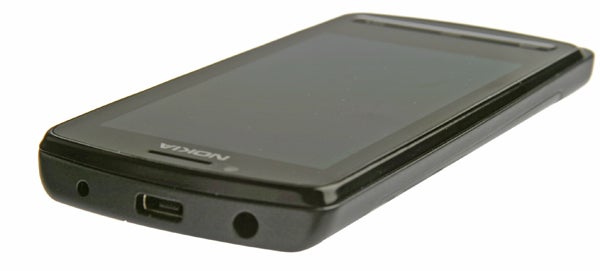
The proprietary charging socket is another Nokia staple, one we’d happily wave goodbye to. Especially when plugging a non-Nokia microUSB cable into the data transfer socket charges the phone anyway – the bundled one doesn’t. Nokia may argue this lets you charge quickly while transferring data, but we’d rather have the simplicity of standard microUSB charging. As has often been said on this front, Nokia needs to get with the times.
The Nokia 700 marks an important updating of Symbian^3, arriving alongside the Belle update. This OS update is meant to drag Symbian into the present, with an overhaul that Nokia hopes will stop people like us from labelling it hopelessly out of date. Does it work?
For the most part, yes. The interface has been thoroughly redesigned in the image of Google’s Android, and while it may not have its own striking identity like Windows Phone 7, it’s a lot more attractive than the drab Symbian^3 look that was at the root of our disappointment with the Nokia N8, among many others. The widgets system feels less boxy, the naff old menu bar has been replaced and the notifications system has been re-worked.
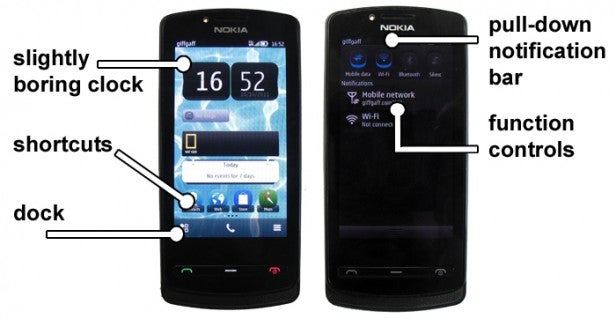
You now drag a finger down from the top of a home screen to pull down a notifications bar, which is also home to buttons that turn data, Wi-Fi, Bluetooth and Silent mode on and off. It’s so Android it hurts. But, hey, it’s a big improvement.
You’re given four home screens that you can pack with widgets and shortcuts, and each has specific wallpaper linked to it. They cycle as you flick through them, but if this is a bit too much like frivolous fun for your liking, you can set them to the same image. You can also slim down to just three home screens, or bulk-up to six.
To customise these home screens, you simply hold a finger down on the touchscreen until a pop-up appears, letting you add shortcuts and widgets or change wallpapers. The selection of pre-installed widgets is fairly comprehensive, featuring 21 ranging from clocks to social networking streams and Wi-Fi switches. What’s still present here is that old Symbian lack of style.
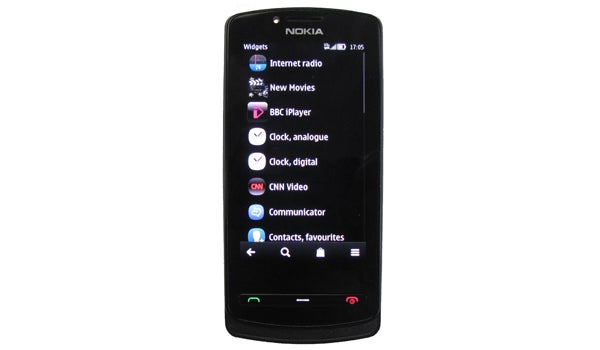
(centre)The widget selection menu(/centre)
Although functionally very useful, there’s nothing quite pretty enough to make customisation fun, within the widget toybox. Part of the reason why HTC Sense is so popular is that it offers a handful of funky-looking clocks. Uber-geeks may not want to admit it, but looks are an important part of smartphone customisation – and the drab-looking clocks and calendar here don’t quite cut it. A nice selection of wallpapers is included, though.
The way a system responds to touches is also at the root of how we react to a smartphone, and Belle has made headway here. Day-to-day navigation felt curiously abrupt on the Nokia N8 – the way it leapt between homescreens and menus were a bit too awkward when compared with iOS or Android. Improved transitions and animations make the Nokia 700 feel more in-line with its rivals on this front now, although Symbian^3 is still not as slick as iOS, Android Gingerbread or Windows Phone 7.
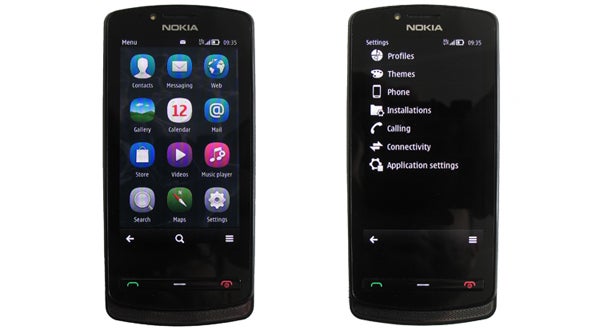
The Nokia 700 does have processor power on its side. With a 1GHz processor, it has more grunt at its disposal than either the Nokia N8 or C7. This is impressive as the 700 is cheaper than either. Multi-tasking is very easy to manage too. Just press down on the physical select soft key to bring up the multitasking menu, which shows snapshots of any running apps. Within the main apps menu running apps are signposted with a little dot icon as well. There’s no mistaking what is and isn’t running here.
Although the Nokia 700 hasn’t yet (at the time of writing) been given official support for the slew of impressive 3D games made for the Nokia N8, such as Gameloft’s Avatar and Asphalt 5, they all seem to work just fine on the phone. These supply you with a better gaming experience than you’d get on a rival 600MHz Android device, but the back catalogue is limited. The range of “Nokia HD” games, as they’re called, hasn’t grown a great deal in 2011 and was always primarily powered by Gameloft. This is one of mobile gaming’s most important publishers, but Symbian^3 gaming and app activity don’t have the wider developer support of iOS or Android.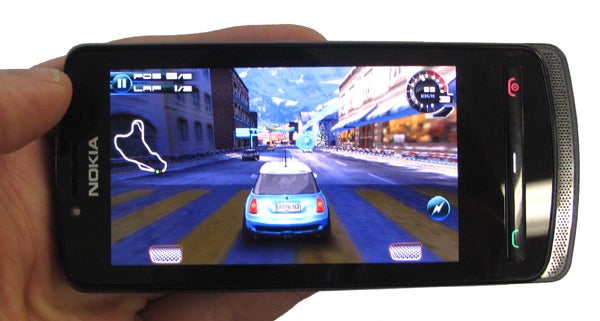
(centre)Asphalt 5: an oldie but a goodie(/centre)
Delve directly into the built-in app store, the Nokia Store (previously known as Ovi Store), and you’ll find the mobile gaming staple Angry Birds and a few classic like Tetris and Bejeweled, but little else of value. Many games are old and are based on Java titles rather than their smartphone counterparts, and hence feel and look old and clunky. Seek out the Nokia HD titles yourself though and you’ll have a blast.
It’s the same story with apps. Symbian app development has been going on for yonks – since before the Apple App Store opened – but as the current pace of development isn’t as strong as iOS or Android, plenty of what you’ll find is out of date or of low quality. Lots of the best bits aren’t available on Nokia Store, either. Spotify, for example, has to be downloaded directly from Spotify’s website. Accept that to get the most out of Symbian apps you need to go the extra mile and there are several gems to uncover. 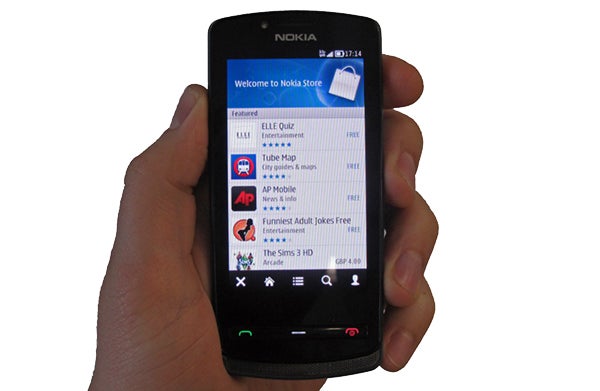
(centre)The Nokia 700’s native app store(/centre)
However, if apps are a priority, you’d be better off with a budget Android phone. Too many smartphone staples are missing. Where’s the official Facebook app? Where’s the Kindle bookstore? Where’s the decent Intenet radio app (Nokia Internet Radio can’t even find BBC 6 Music)?
That said, the Nokia 700 packs-in much of what many smartphone users need anyway.
The Nokia 700 may not come across as an app king when sat next to an iPhone 4 or an Android like the HTC Wildfire S, but it can do quite a bit sans a trip to the Nokia Store. Twitter and Facebook are integrated into the Social app, there are built-in iPlayer and YouTube apps, Shazam, a video editor, Vlingo voice commands and – our favourite – a voice synthesiser to read your SMS messages, among others.
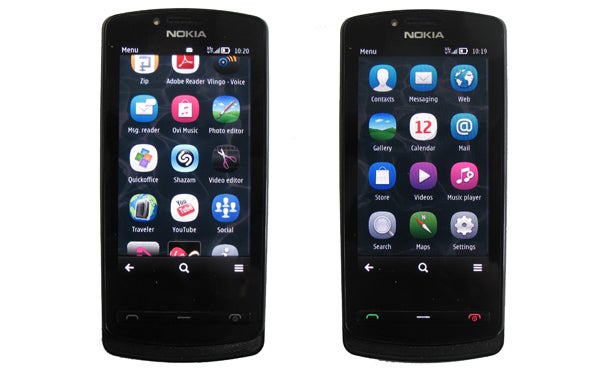
All these apps live within a vertical scrolling main menu. Like the home screens, this has been thoroughly overhauled in the latest iteration of Symbian. Clunky-looking icons have been replaced with better rounded-off ones, providing a snazzier look. These icons can be organised as you like, with completely manual positioning and support for folders. Any app fans will want to use the latter, as the 3-icon columns mean it’s easy to turn the apps menu into a mile-long list.
Some built-in apps are a bit frivolous, a bit niche, but others are desperately important. Mercifully, the basics of social network integration are decent. The Social app lets you view the latest updates from Facebook and Twitter as a single stream, or delve deeper into the content of the two networks – messages, events, @replies and so on. As we saw with the Nokia 700’s widgets, it’s not a desperately attractive app but functions well, with a look that’s a step above the standard set by the dark old days of Symbian.

The standard web browser has been given some significant – and much-needed – UI improvements since Symbian^3’s retail launch in 2010. There’s now a static nav bar at the bottom of the screen, removing the need to constantly bring up the menu manually.
The nav bar offers back and forward buttons, a bookmark shortcut, access to tabs and a button to bring up the expanded options menu. This offers slightly lesser-used things like Feeds, History, link sharing and the option to add a bookmark. You can choose whether you want the Nokia 700 to use Google or Bing too, which is nice.
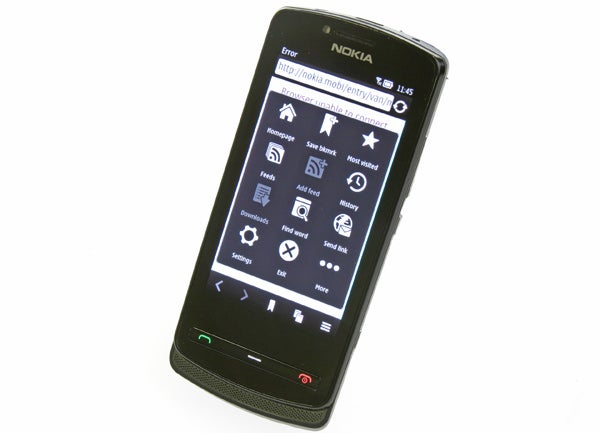
The phone’s touchscreen is happy to perform multi-touch gestures like pinch zooming, and text re-rendering is quick. One sadly missing feature is full Flash 10.1 support – the Nokia 700 makes do with the relatively limited Flash lite 4.0. The 1GHz processor could have coped with the strain too. Ho hum.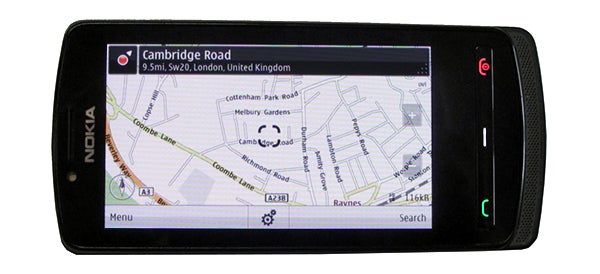
(centre)Maps. Not Ovi Maps.(/centre)
Like any GPS-enabled Nokia smartphone, it comes with Maps – previously Ovi Maps – pre-installed. And it’s just as great as ever. For many people, it won’t seem much better or worse than rivals like Google Maps, but it is a little bit special. It’s a pro at pre-loading maps using the phone’s memory (inc. SD cards). You can download maps over Wi-Fi so they don’t have to load over slow (and often costly) 3G while you’re out. Having cached maps also makes dashing across large areas within Maps super-quick – which the 1GHz processor also has no trouble with.
As a phone that can be had for free on a £15-a-month contract, the Nokia 700’s screen is a stand-out feature. You simply don’t normally get a screen of this quality at this price.
It uses an AMOLED panel, which is rather different from the usual TFT screens we see at this price. AMOLED screens don’t use a traditional backlight – which fires light through pixels a bit like light passing through a stained glass window. OLED panels are rather more dynamic. The pixels illuminate themselves, so there’s no need for a global backlight.
This lets black parts of the screen stay truly dark, giving unbeatable contrast when executed properly. Nokia calls its stab at the tech a ClearBlack display, and while that’s just as much a marketing label as Apple’s Retina Display, it’s right on the money. Contrast is superb, and blacks are black.
While the 640×360 pixel display doesn’t sound particularly high-res when the Orange San Francisco packs in 800×480 pixels, its 229dpi pixel density supplies a very sharp image. 230,400 pixels is a lot for 3.2in, in other words.
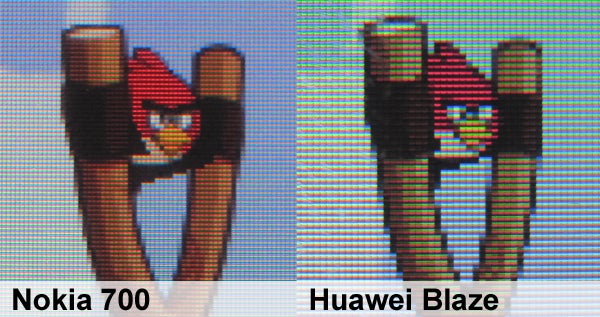
(centre)A high res AMOLED screen vs lower res TFT. Quite the difference… (/centre)
As with most AMOLED screens brightness is excellent, offering overkill levels of luminescence for most situations at max setting. Also common to AMOLEDs, the Nokia 700’s screen is significantly oversaturated. Colours are extremely vivid, and while it looks fab for the most part, we wish there were some colour controls nestled within the Settings menu to let you turn this down a notch.
Angled viewing poses no problem, with just a slight blue hue cast over the image at extreme angles. This may mean that that nosey chap setting next to you on the train may be able to read your text messages, though.
Typing on the 3.2in screen is a bit tricky if you’re used to using a larger touchscreen. The keyboard’s width is very limited in portrait mode, making it easy to mis-type characters – this is where the Nokia 700’s 5cm width becomes a disadvantage. Symbian^3 doesn’t offer as aggressive auto-correct functionality as Android, so prepare for some deleting and re-typing as you get used to that smaller screen. It’s particularly noticeable here, as its screen is more slender than most 3.2in smartphones.
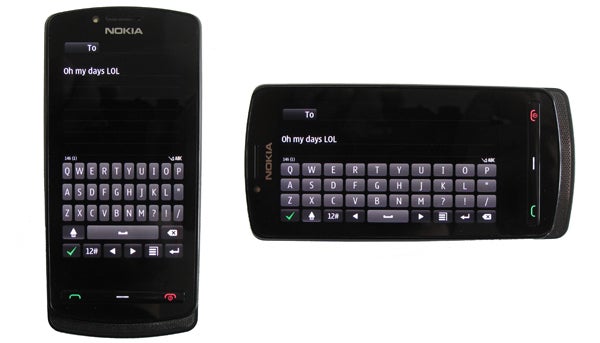
(centre)The small size is handy, but not for portrait typing(/centre)
Nokia has ported Swype to Symbian (available from Nokia Store), which lets you drag a path over the keys in a vague approximation of to spelling out a word, then it guesses the word you want from your movements. Some find this easier when limited to a small screen. If you really can’t get on with portrait typing, the landscape virtual keyboard is much more spacious.
When holding the Nokia 700 on its side like this, when typing or playing a game, it’s too easy to accidentally cover the light sensor. This is what determines how bright the screen needs to be when set to automatic brightness. It’s not a disastrous bug, but can make it seem as though your phone has gone a bit bi-polar – dimming and brightening-up every handful of seconds.
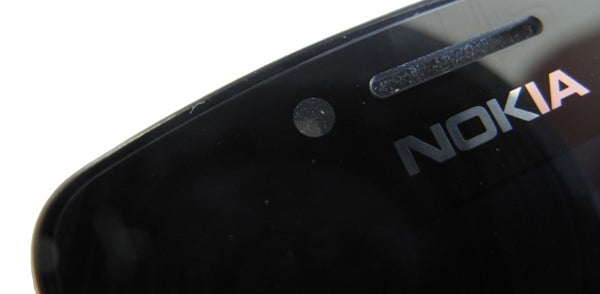
Matching the top quality of its AMOLED display, the touchscreen uses a Gorilla Glass front. This feels great as you glide a fingertip across it – with a more luxurious feel than the hard plastic used in cheaper phones. It’s also commendably scratch-resistant. The Nokia 700 shouldn’t emerge scuffed and scratched from a day’s punishment in your pocket.
The touchscreen itself is capacitive, like that of the iPhone 4 or HTC Desire S. Although occasionally held-up by the Symbian OS software, it’s very responsive. As already noted, it’s capable of multi-touch gestures too.
While Symbian^3 continues to lag behind its smartphone rivals in several key respects, hardware-wise the Nokia 700 is an extremely impressive little device.
To match the top-quality AMOLED screen, the Nokia 700’s video capabilities wipe the floor with most smartphone rivals. The built-in video player can handle a wide array or codec types, including MKV, Xvid, DivX and MP4. Our 1080p MKV test files failed to show up within the app whatsoever, but 720p files played back at full speed without a problem. RMVB also failed to play, but as a fairly niche format it doesn’t detract too much from otherwise excellent performance.
It just makes us wish that the Nokia 700’s screen was that little bit bigger, because 3.2in is arguably a little small to watch anything longer than a few minutes on. The app does let you make the most of the screen, with aspect ratio options built-in – although this option didn’t show up for absolutely all file types. Nonetheless this phone makes most Android handsets’ built-in video abilities look embarrassingly bad. 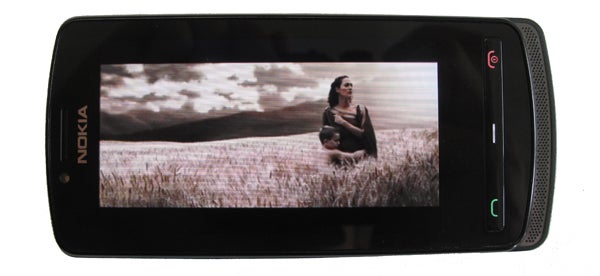
(centre)The video player is dead spiffy(/centre)
The Belle Symbian update hasn’t upgraded the music player app, but this is one element that was fine already. It’s visually rich, using a slick ‘n’ quick cover flow system and making good use of album art throughout.
To use as a full MP3 player you’ll need to invest in a large-capacity microSD card, because the Nokia 700 only has 2GB of internal memory. The slot lies under the battery cover. Audio codec support isn’t as impressive as video, with no FLAC or OGG support, but most non-lossless libraries will be covered – i.e. mp3 and aac are good to go. An FM radio is included too.
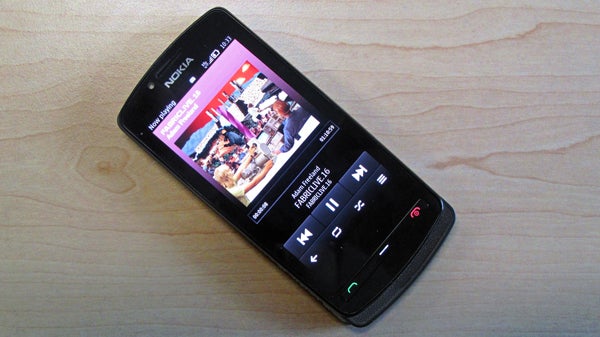
Hopping ’round to the back of the phone for a minute, we find the camera. A forefather of the Nokia 700, the Nokia N8, is perhaps still the best camera phone ever made. However, in recent handsets Nokia has moved its focus (geddit) away from top-end snappers, most notably by getting rid of autofocus and using a fixed focus system instead.
The benefit of fixed focus is that it makes snapping away quicker, as you don’t have to wait for the lens to zero-in on a subject. The main downside of this is not being able to photograph anything close-up as it just becomes a blurred mess.
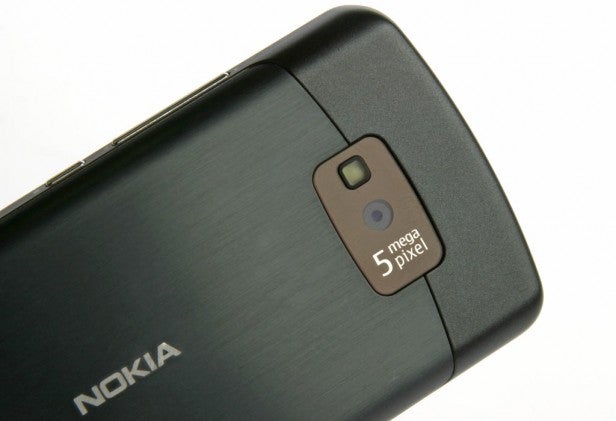
Although its 5-megapixel sensor is more powerful than most fixed-focus cameras have to make do with, the Nokia 700 doesn’t break away from these norms. Photos offer very limited clarity and a glazed look that further diminishes the impression of detail. The LED flash is a welcome addition, but image quality is poor. Then again, it is about typical for a a phone of this price.
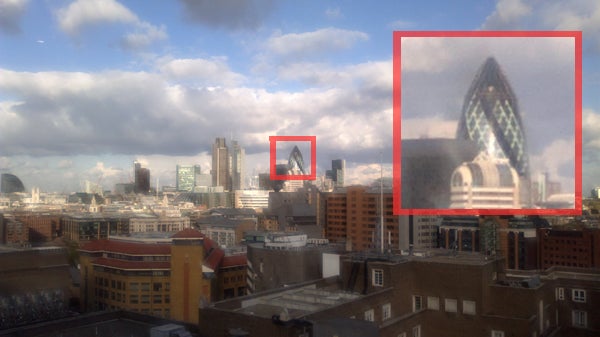
Shooting in widescreen – for full-frame check out the gallery
Borrowing its camera app interface from the Nokia N8, the level of control you’re given over your photos is, conversely, pretty good. On top of mobile camera staples like colour tone, timer, white balance and exposure settings, the Nokia 700 lets you fiddle with ISO, contrast, sharpness, and offers face detection. The camera app doesn’t let you apply lots of silly filters to your snaps, but the nifty Photo Editor app does, and more besides.
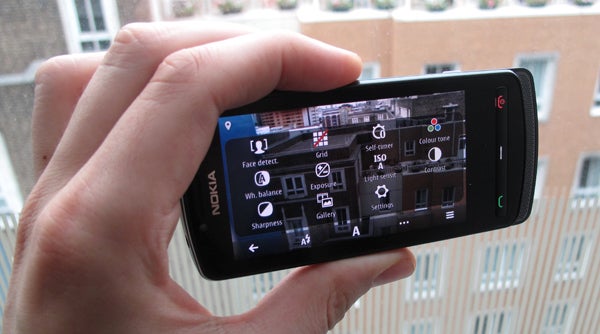
We can forgive some neglecting of a phone camera in favour of getting the basics right, but the effort that the Nokia 700 puts into pushing NFC (Near Field Communication) loses it some of this goodwill. NFC lets one device communicate with another over short distances, most famously for use in things like contactless payment systems. It’s the latest buzz word in smartphones so Nokia is shouting particularly loud about it with this handset.
Using NFC, you can pair the 700 with another compatible device and share photos or music. Just like Bluetooth. There’s also an NFC-capable game available from Nokia Store, enabling NFC multiplayer. As has been done for years, using Bluetooth. How many people use Bluetooth for this sort of stuff these days? Not many. Until NFC wins itself some significant positioning within the real world, as a payment method or similar, it’s still only a tickbox ‘nice to have’ feature.
Nokia’s phones have a reputation for being better at making calls than the average smartphone, and the Nokia 700 is no different. On its back is a microphone, just below the battery cover, that monitors ambient noise. This is then used to provide noise cancellation, filtering out noise of traffic and so on by the time it reaches whoever you’re calling. It’s fairly rare to find this kind of cancellation in a reasonably affordable phone.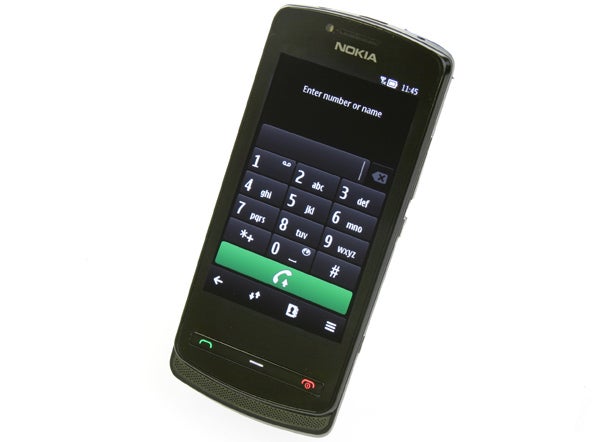
Call quality is good too, if not astounding. It could do with a little more treble presence, sounding a little boxy, but max volume is good and voices are given plenty of body.
Over the period of testing, the 1080mAh battery lasted significantly longer than a rival mid-range Android would. Abuse the battery with high-powered games, video playback and plenty of 3G mobile internet browsing and you’ll still only get a day out of it, but with more relaxed use you should be able to squeeze out a solid two. As it uses an AMOLED screen, slapping a mostly black wallpaper on the 700’s home screens will save you a bit of juice too.
It’s clear that Nokia has tried pretty hard with the 700. The screen and build quality are great, and its initial operator pricing on contract makes it a pretty attractive option. That you can get a phone with this hardware for £15 a month is really quite amazing. However, as a SIM-free proposition it’s less attractive – matched by competent Androids like the HTC Salsa and the original HTC Desire.
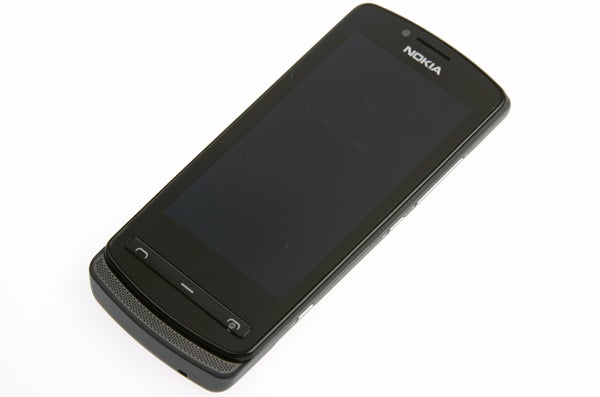
The Belle upgrade to Symbian^3 has lessened several of the operating system’s issues, making it feel less ancient and look a lot less ugly. In fact this and other recent updates to Symbian have highlighted just how capable an OS it is, and we really wonder if the whole decision to ditch it for high end handsets and go with Windows Phone 7 was the best one. Obviously this particular phone doesn’t compete with the biggest and best from the competition but increase the screen size and slap the camera from the N8 on it and you’d have a good start. Nevertheless there are other problems. While the big launch of the Nokia N8 has ensured a few handfuls of impressive 3D games for the Nokia 700, beyond this apps and games support is pretty poor. And very poor compared with iOS and Android. We recommend taking a look at the line-up before buying, to make sure you’ll be able to do everything you want to with this handset.
Verdict
With a top-quality Gorilla Glass screen and part-metal build, the Nokia 700 instantly feels like a top-quality device. The display carries this on too, using a great AMOLED panel. Sure, it’s a smaller phone than many but hardware wise it almost seems surprising how you can get this handset for free on contracts well under £20 a month. However, all becomes clear when using the phone as it’s limited by the constraints of Symbian. The new Belle update significantly ups the aesthetic ante, with the system now looking a lot better than it ever has before, but looks alone can’t cover up the relative lack of apps. There are thousands, but the hit rate is even worse than it is on Android. This is one of the most desirable Nokias in quite some time, but buying it comes with a compromise or two.


It’s not out of focus because we’re bad photographers – it’s because the Nokia 700 is
How we test phones
We test every mobile phone we review thoroughly. We use industry standard tests to compare features properly and we use the phone as our main device over the review period. We’ll always tell you what we find and we never, ever, accept money to review a product.
Trusted Score
Score in detail
-
Performance 7
-
Design 8
-
Value 8
-
Features 7


